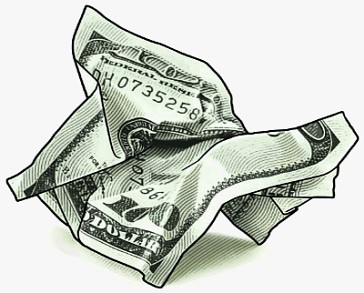Accredited InvestorsAltcoinAnatoli UnitskyAnti-Money Laundering (AML) In CryptoAPIArbitrageArtCoin TokenArticle DirectoryASICAuction Terminology GlossaryBasics of Stock Market InvestingBear MarketBest Crypto Payment Provider In the WorldBitcoinBlockchainBlockchain ConfirmationBlockchain Consensus MechanismBlockchain ForkBlockchain GlossaryBored Ape Yacht ClubBuild a Business That OutperformsBull MarketBuying SkyWay SharesByzantine Fault Tolerance (BFT) ExplainedCasascius CoinCentral Bank Digital Currency (CBDC)Centralized Crypto ExchangeCoinCoinsetCold WalletCollateralCommodity Futures Trading Commission (CFTC)Cross-Chain TechnologyCRUCrypto ExchangeCrypto GlossaryCrypto JokesCrypto Terms to KnowCrypto TickerCryptocurrencyCryptographyCryptojackingCryptounit BlockchainCryptounit GlossaryCryptounit ProgramdApp (Decentralized Application)Dead CoinDecentralized Exchange (DEX)Decentralized Finance (DeFi)Difference Between Bitcoin and EthereumDifferent Ways of Investing MoneyDigital CurrencyDistributed LedgerDo Your Own Research (DYOR)Dollar Cost Averaging (DCA)Dow Jones Industrial Average (DJIA)EncryptionERC-20ERC-721EthereumEvoScentFear Of Missing Out (FOMO)Fear, Uncertainty and Doubt (FUD)Fiat MoneyFNT Fintech CompanyGenesis BlockGlobal Unit PayGlossary of Banking TermsGlossary of Business TermsGlossary of Financial TermsHalvingHODLHot WalletHow Do I Start InvestingHow Rich is Satoshi Nakamoto?How to Create a BlockchainHow to Find Private InvestorsHow to Get Into FintechHow to Program Smart ContractsI Am Thrilled to Be a Part of This Global ProjectInitial Coin Offering (ICO)Initial Public Offering (IPO)Initial Token Offering (ITO)Innovation Basalt TechnologyInnovative Transportation TechnologiesInternational Bank Account Number (IBAN)Investing in Gold Mining StocksInvesting in Gold MiningJagerJoy of Missing Out (JOMO)Know Your Customer (KYC)LedgerLiquidity in CryptocurrencyMaker and Taker Fees in Crypto TradingMarket Capitalization (Market Cap)Meme CoinMetal Credit CardMetaMaskMillenials Now Have Access to Generational WealthMy Best Investment EverNew Digital EvolutionNFT GlossaryOff-Chain TransactionsOn-Chain TransactionsOpen Edition NFTPeer-to-Peer (P2P)Personal Loan GlossaryProbably the Best STO on the MarketProof of Stake (PoS)Real Estate Glossary of TermsReal Estate Investing GlossaryRebase TokenSecurities and Exchange Commission (SEC)Security Token ExchangesSecurity Token Offering (STO)Soulbound Decentralized Identities for Security TokensSoulbound ID Launch by Stobox Proves a SuccessSoulbound TokensStoboxStock Market GlossaryTestimonialsTether Platform and Token (USDT)UnitEx ExchangeUnitsky String TechnologiesUNTBUSDUValidatorWe Started Investing When We Were 25What are Blue Chip NFT?What are Blue Chip Stocks?What are Crypto Assets?What are Crypto Smart Contracts?What are CryptoPunks NFT?What are Digital Assets?What are Digital Collectibles?What are Gas Fees?What are Gas Wars?What are Hashmasks?What are Non Fungible Tokens?What are Non-Sufficient Funds (NSF)?What are Soulbound Tokens (SBT)?What are Stablecoins in Crypto?What are Transactions Per Second (TPS)?What are Utility NFTs?What are Utility Tokens?What Does Burning Crypto Mean?What Does Diamond Hands Mean?What Does Paper Hands Mean?What Does To The Moon Mean?What Does WAGMI Mean?What Happened to Satoshi Nakamoto?What is a 51% Attack?What is a Baby Boomer?What is a Backlink?What is a Banner?What is a Barcode?What is a Bid-Ask Spread in Crypto?What is a Block in Blockchain?What is a Block Reward?What is a Blockchain Address?What is a Blockchain Node?What is a Blockchain Oracle?What is a Blog?What is a Bond?What is a Bot?What is a Broker?What is a Business Accelerator?What is a Cash Cow?What is a Commercial Bank?What is a Commodity?What is a Con?What is a Credit?What is a Credit Limit?What is a Credit Rating?What is a Crypto Airdrop?What is a Crypto Bridge?What is a Crypto Scam?What is a Crypto Token?What is a Crypto Wallet?What is a Crypto Whale?What is a Crypto Winter?What is a Cryptocurrency Public Ledger?What is a Cryptocurrency Roadmap?What is a DAO?What is a Dark Pool?What is a Day Trader?What is a Dead Cat Bounce?What is a Default?What is a Derivative?What is a Digital Credit Card?What is a Fiscal Quarter?What is a Fungible Token?What is a Governance Token?What is a Grace Period?What is a Hard Fork?What is a Hot Wallet?What is a Hybrid Blockchain?What is a Hybrid PoW/PoS?What is a Joint Account?What is a Market Cap?What is a Merkle Tree in Blockchain?What is a Mining Farm?What is a Nonce? What is a PFP NFT?What is a POS System?What is a Prepaid Card?What is a Private Blockchain?What is a Private Key?What is a Public Blockchain?What is a Public Key?What is a Reserve Currency?What is a Ring Signature?What is a Routing Number?What is a Rug Pull in Crypto?What is a Safe Deposit Box?What is a Satoshi?What is a Security Token?What is a Seed Phrase?What is a Shitcoin?What is a Sidechain?What is a Soft Fork?What is a Spot Market?What is a State Bank?What is a SWIFT Code?What is a Tax Identification Number (TIN)?What is a Time Deposit?What is a Transaction Account?What is a Variable Interest Rate?What is a Virtual Assistant (VA)?What is a Virtual Card?What is a Virtual Currency?What is a Visa Card?What is a Whitelist in Crypto?What is a Whitepaper?What is Accounts Payable (AP)?What is AMA in Crypto?What is Amortization?What is an Accrual?What is an ACH Transfer?What is an Actuary?What is an Addendum?What is an Algorithm?What is an Angel Investor?What is an Annuity?What is an Asset?What is an ATM?What is an Atomic Swap?What is an Audit?What is an Avatar?What is an EIN?What is an Embargo?What is an Entrepreneur?What is an IDO (Initial Dex Offering)?What is an Interest Rate?What is an Internet cookie?What is an Investment Bank?What is an NFT Drop?What is an NFT Floor Price?What is an Ommer Block?What is an Orphan Block?What is an Outstanding Check?What is an Overdraft?What is Artificial Intelligence (AI)?What is B2B (Business-to-Business)?What is B2G (Business-to-Government)?What is Bartering?What is Bitcoin Dominance?What is Bitcoin Pizza Day?What is Blockchain Immutability?What is Blockchain Used For?What is BRICS?What is Business-to-Consumer (B2C)?What is C2C (Customer to Customer)?What is Capitalism?What is Catfishing?What is CFD Trading?What is Check Kiting?What is Cloud Mining?What is Communism?What is Content Marketing?What is Decentralization in Blockchain?What is DeFi in Crypto?What is Delisting?What is Depreciation?What is Digital Marketing?What is Diversification?What is Double Spending?What is Dumb Money?What is Dumping?What is Earnings Per Share (EPS)?What is Economics?What is Email Marketing?What is Equity?What is Etherscan?What is Fintech?What is Foreign currency?What is Forex?What is Fundamental Analysis (FA)?What is GameFi?What is Generative Art NFT?What is Gwei?What is Hard Currency?What is Hash Rate?What is Hashing in Blockchain?What is Inflation?What is Initial Game Offering (IGO)?What is Interest?What is Interest Income?What is Mainnet?What is Mastercard?What is Metaverse in Crypto?What is Mining in Cryptocurrency?What is Minting NFT?What is Mobile Banking?What is Money Laundering?What is NFT Alpha?What is NFT Metadata?What is NFT Rarity?What is NGMI Meaning?What is Nominal Interest Rate?What is Online Banking?What is Open-End Credit?What is OpenSea NFT Marketplace?What is Personal Identification Number (PIN)?What is Play-to-Earn?What is Polygon?What is Proof of Authority (PoA)?What is Proof of Work (PoW)?What is Public Key Cryptography?What is Pump and Dump?What is Quantum Computing?What is Refinancing?What is Retail Banking?What is Ripple?What is Sharding?What is Slippage in Crypto?What is Smart Money?What is Solvency?What is Soulbound ID?What is SSL?What is Staking in Cryptocurrency?What is Technical Analysis (TA)?What is Testnet?What is the Ask Price?What is the Better Business Bureau (BBB)?What is the Bid Price?What is the Dark Web?What is the InterPlanetary File System (IPFS)?What is the Gold Standard?What is the Lightning Network?What is the Prime Rate?What is the Sandbox?What is the Secondary Market?What is the World Bank?What is Tier 1 Capital?What is Tokenomics?What is TRC-20?What is Universal Banking?What is Unspent Transaction Output (UTXO)?What is Usury?What is Volatility in Crypto?What is Wash Trading?What is Web3?What is Whisper?What is XRP?What is Zero-Knowledge Proof (ZKP)?Who is Beeple?Who is Satoshi Nakamoto?Who is Vitalik Buterin?Why Tokenization is a Safe HavenWhy You Should Try Your Hand at Trading
What is Interest?
- Home
- Glossary of Banking Terms
- What is Interest?
Interest is an essential concept in the world of finance, and it affects nearly every aspect of our lives.

Whether we're talking about loans, credit cards, savings accounts, or investments, interest plays a crucial role in determining how much money we have or owe.
What is Interest?
At its core, interest is simply the cost of borrowing money. When you borrow money from a lender, whether it's a bank, a credit card company, or an individual, you're essentially paying them to use their money. Interest is the amount you pay for that privilege.
Interest rates are typically expressed as an annual percentage rate (APR), which represents the percentage of the total amount borrowed that you'll need to pay back in addition to the principal. For example, if you borrow $10,000 at a 5% APR, you'll need to pay back a total of $10,500.
It's worth noting that interest rates can vary widely depending on a variety of factors, such as the length of the loan, the creditworthiness of the borrower, and the type of loan. For instance, a borrower with excellent credit may be able to secure a lower interest rate than someone with poor credit.
There are two main types of interest: simple and compound. Simple interest is calculated based on the principal amount borrowed, while compound interest is calculated based on the principal plus any interest that has accrued over time. Compound interest is more common, as it can result in significantly larger returns over time.
Interest can be both positive and negative, depending on whether you're the borrower or the lender. For lenders, interest represents a source of income and a way to earn a return on their investments. For borrowers, interest represents a cost that must be factored into their budgets and repayment plans.
Interest rates are heavily influenced by macroeconomic policy, particularly by the Federal Reserve's Federal funds rate. When the Federal Reserve raises interest rates, it makes borrowing more expensive, which can slow down economic growth. Conversely, when interest rates are lowered, borrowing becomes cheaper, which can stimulate economic activity.
It's also worth noting that some societies and cultures have historically viewed charging interest as morally dubious. This was especially true in the Middle Ages, when lending money with interest was often seen as a form of sin. However, over time, the concept of interest became more widely accepted as a necessary component of economic growth and development.
In some parts of the world, there are even interest-free banking systems that operate on the principle of profit and loss sharing rather than charging interest on loans. While these systems are still relatively rare, they represent an interesting alternative to the traditional model of borrowing and lending.
The Evolution of Interest Rates: From Sinful to Sensible
Interest rates have become an integral part of our modern economy, but the concept of charging interest on loans was once considered taboo. The idea of lending money with an added cost was frowned upon in ancient Middle Eastern civilizations and throughout the Medieval era.
However, during the Renaissance, a shift occurred as people began to see the benefits of borrowing money to grow businesses and improve their social status. The rise of markets and economic mobility paved the way for loans to become more common and for charging interest to be more widely accepted. The emergence of money as a commodity further solidified the opportunity cost of lending and the need to charge for it.
In the 1700s and 1800s, political philosophers like Adam Smith, and Carl Menger explained the economic theory behind charging interest rates for borrowed money. This helped to shape the modern financial system that we have today.
Interestingly, some countries like Iran, Sudan, and Pakistan have embraced interest-free banking systems, partnering with lenders in profit and loss sharing instead of charging interest. This trend in Islamic banking gained more traction towards the end of the 20th century, regardless of profit margins.
Today, interest rates are applied to various financial products such as mortgages, credit cards, car loans, and personal loans. In recent years, interest rates have been on a downward trend, reaching near-zero levels in 2020. This has had a significant impact on the economy, and it remains to be seen what the future of interest rates will look like.
The Bottom Line
Interest plays a crucial role in promoting economic prosperity by facilitating borrowing and lending of money, which in turn encourages spending. This helps to prevent capital from remaining idle and instead, it is utilized by borrowers and lenders. The payment of interest incentivizes individuals to invest their money and keep it in circulation. Therefore, interest is a fundamental element that drives our high-functioning society towards economic growth and development.
Related Articles

What is Inflation?
Monetary policy involves controlling the money supply and interest rates to influence inflation. Fiscal policy involves adjusting...

What is a Grace Period?
However, if you carry over any portion of your balance into the next billing cycle, you will be charged interest on the outstanding amount.

What is a Credit Rating?
On the other hand, those with a lower credit rating are deemed higher risk, and they may have to pay higher interest rates or may even struggle to obtain credit.

What is a Credit?
It is essentially an agreement between two parties where one party (the borrower) receives funds from the other party (the lender) with the expectation of paying it back, often with interest.
- Home
- Glossary of Banking Terms
- What is Interest?